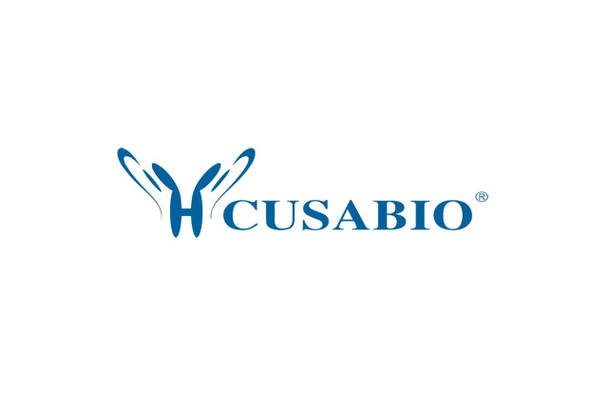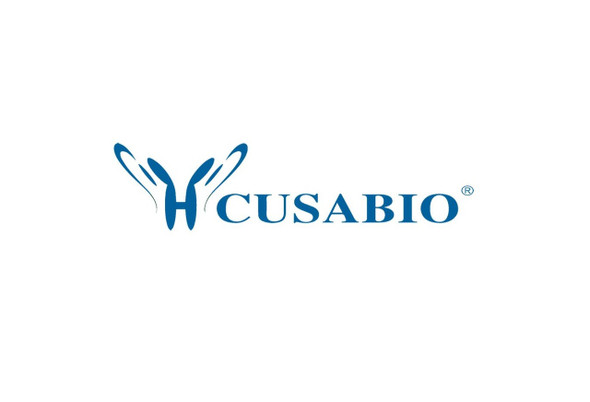Cusabio Active Proteins
Recombinant Human C-C motif chemokine 16 protein (CCL16) (Active) | CSB-AP000601HU
- SKU:
- CSB-AP000601HU
- Availability:
- 5 to 10 Working Days
Description
Recombinant Human C-C motif chemokine 16 protein (CCL16) (Active) | CSB-AP000601HU | Cusabio
Protein Description: Full Length of Mature Protein
Alternative Name (s) : Chemokine CC-4, Chemokine LEC, IL-10-inducible chemokine, LCC-1, Liver-expressed chemokine
Gene Names: CCL16,ILINCK,NCC4,SCYA16
Research Areas: Immunology
Species: Homo sapiens (Human)
Source: E.Coli
Tag Info: Tag-Free
Expression Region: 24-120aa
Sequence Info: QPKVPEWVNT PSTCCLKYYE KVLPRRLVVG YRKALNCHLP AIIFVTKRNR EVCTNPNDDW VQEYIKDPNL PLLPTRNLST VKIITAKNGQ PQLLNSQ
Biological Activity: Fully biologically active when compared to standard. The biological activity determined by a chemotaxis bioassay using human monocytes is in a concentration range of 10-100 ng/ml.
MW: 11.2 kDa
Purity: >97% as determined by SDS-PAGE and HPLC.
Endotoxin: Less than 1.0 EU/µg as determined by LAL method.
Relevance: Shows chemotactic activity for lymphocytes and monocytes but not neutrophils. Also shows potent myelosuppressive activity, suppresses proliferation of myeloid progenitor cells. Recombinant SCYA16 shows chemotactic activity for monocytes and THP-1 monocytes, but not for resting lymphocytes and neutrophils. Induces a calcium flux in THP-1 cells that were desensitized by prior expression to RANTES.
PubMed ID: 9596672; 9545580; 10213461; 9642106; 10235110; 10671294; 15489334
Notes: Repeated freezing and thawing is not recommended. Store working aliquots at 4℃ for up to one week.
Function: Shows chemotactic activity for lymphocytes and monocytes but not neutrophils. Also shows potent myelosuppressive activity, suppresses proliferation of myeloid progenitor cells. Recombinant SCYA16 shows chemotactic activity for monocytes and THP-1 monocytes, but not for resting lymphocytes and neutrophils. Induces a calcium flux in THP-1 cells that were desensitized by prior expression to RANTES.
Involvement in disease:
Subcellular Location: Secreted
Protein Families: Intercrine beta (chemokine CC) family
Tissue Specificity: Mainly expressed in liver, also found in spleen and thymus. Highly expressed in LPS- and IFN-gamma-activated monocytes, weakly in some lymphocytes, including natural killer cells, gamma-delta T-cells, and some T-cell clones.
Paythway: Chemokinesignalingpathway
Form: Lyophilized powder
Buffer: Lyophilized from a 0.2 µm filtered PBS, pH 7.4
Reconstitution: We recommend that this vial be briefly centrifuged prior to opening to bring the contents to the bottom. Please reconstitute protein in deionized sterile water to a concentration of 0.1-1.0 mg/mL.We recommend to add 5-50% of glycerol (final concentration) and aliquot for long-term storage at -20℃/-80℃. Our default final concentration of glycerol is 50%. Customers could use it as reference.
Uniprot ID: O15467
Uniprot Entry Name: CCL16_HUMAN
HGNC Database Link: HGNC
UniGene Database Link: UniGene
KEGG Database Link: KEGG
STRING Database Link: STRING
OMIM Database Link: OMIM









